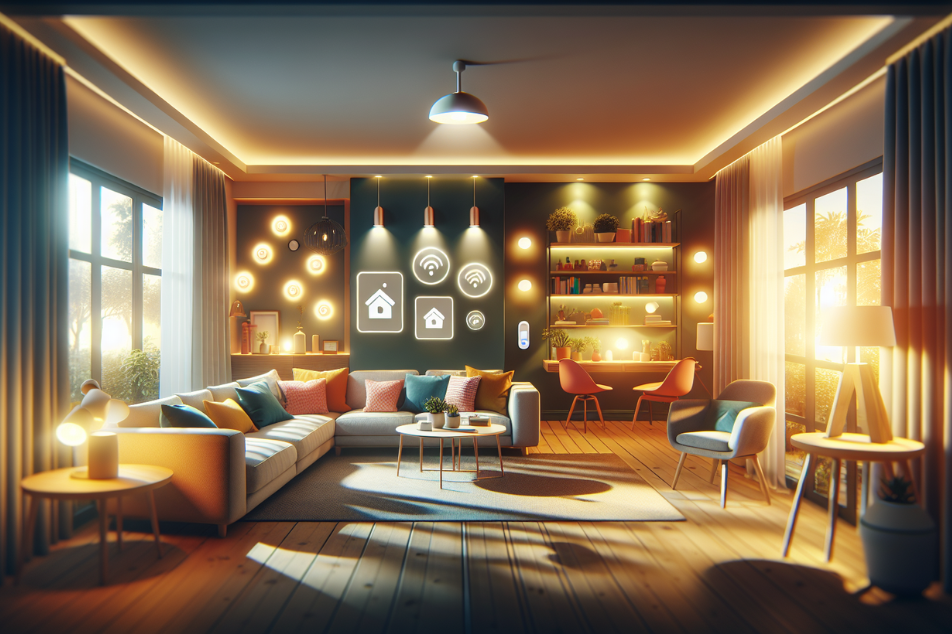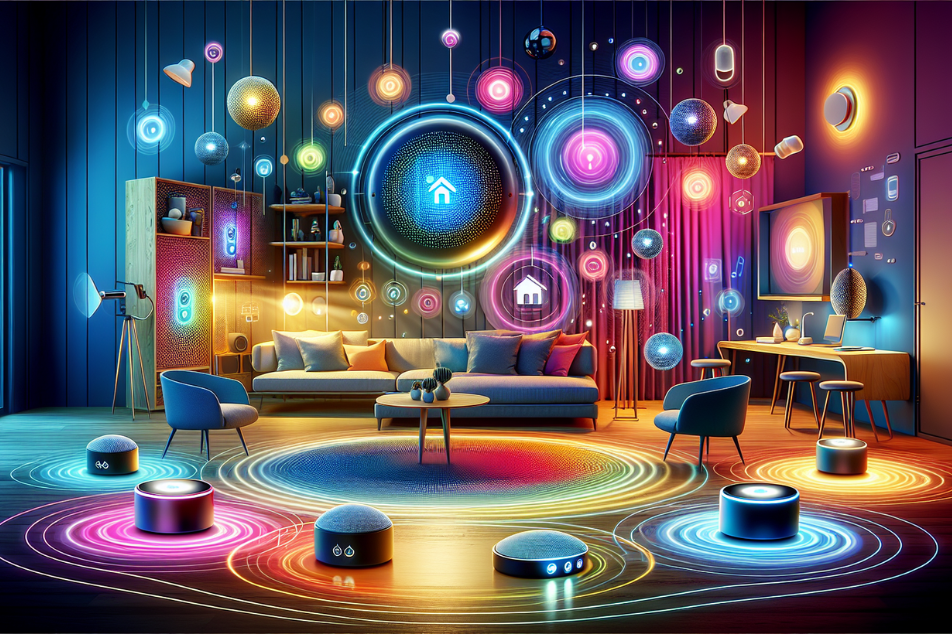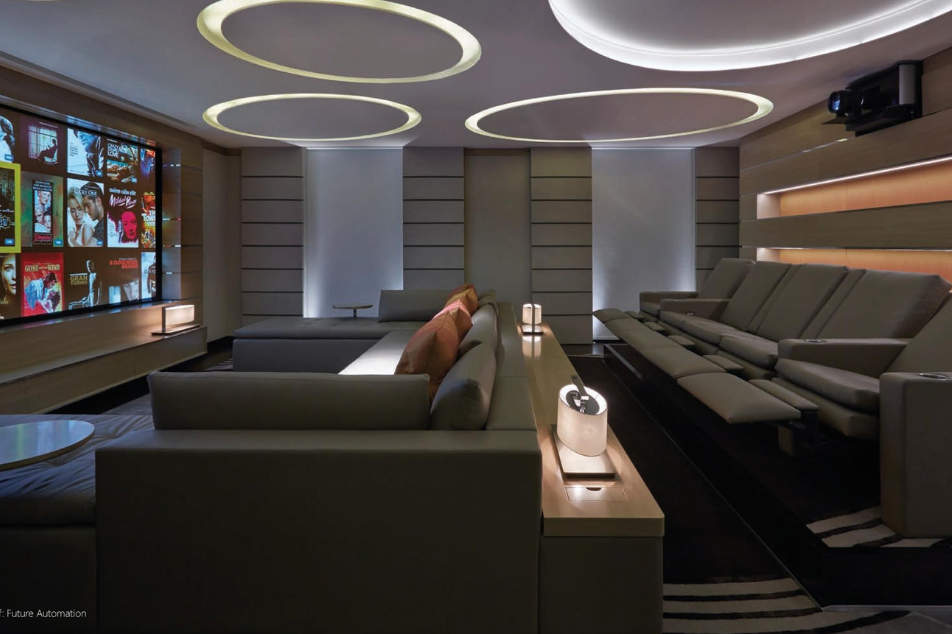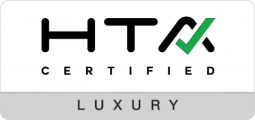Smart LED Systems: The Future of Connected Home Lighting
The Evolution of Smart LED Lighting in Modern Homes
The future of lighting—specifically, smart LED systems for a connected home—offers unparalleled control and efficiency. As these systems evolve, they will further integrate with smart home devices, enhancing convenience, security, and energy savings. This article explores the exciting advancements and benefits of the future of lighting smart LED systems for a connected home.
Key Takeaways
-
Smart LED lighting systems revolutionize home illumination with energy efficiency, user-friendly controls, and customizable settings.
-
Integrating smart lighting with other smart home devices enhances convenience, improves security, and contributes to overall well-being.
-
Future innovations in smart lighting will focus on AI, gesture control, and sustainability, promising an even more integrated and eco-friendly approach.
The Rise of Smart LED Lighting Systems

Smart lighting products such as smart bulbs and switches are revolutionizing how we light our homes, offering a level of control and customization that traditional lighting systems simply can’t match. The advent of smart home lighting solutions is changing the way we illuminate our spaces, making them not only more efficient but also more user-friendly. Imagine being able to adjust the lighting conditions in your home to suit any mood or occasion with just a few taps on your smartphone or even through voice commands.
A major advantage of smart LED lighting systems is their energy efficiency and cost-saving potential. Advanced LED technology consumes far less energy compared to traditional incandescent bulbs. As a result, homeowners can enjoy lower electricity bills while also reducing their environmental footprint. Smart lighting adds convenience, enhances energy efficiency, and allows lighting settings to be customized according to individual preferences and needs.
What sets smart lighting systems apart from traditional lighting is the unprecedented level of control they offer. With smart lighting, you can create programmable schedules, integrate with other smart home devices, and even control lights remotely. IoT technology allows smart lighting to connect with other devices, enhancing functionality beyond simple illumination.
Selecting a smart lighting solution requires considering factors like installation ease, compatibility, and energy efficiency to maximize your investment.
How Smart LED Lighting Works
At the heart of smart LED lighting systems are specially designed components, like led bulbs and fixtures, that include wireless connectivity capabilities. These smart light bulbs communicate using various wireless protocols such as Bluetooth, Zigbee, and WiFi, allowing them to connect seamlessly with your home’s network and other smart devices. This connectivity is what enables the smart lighting system to offer such a high level of control and customization.
Sensors play a crucial role in smart LED lighting systems, enabling data collection and operational adjustments that promote energy efficiency. For instance, motion sensors can detect when a room is occupied and automatically turn the lights on or off, ensuring that energy is only used when necessary. This not only helps in saving energy but also adds a level of convenience to the daily routine.
Smart lighting systems create a centralized network that can be controlled and monitored through mobile applications, providing comprehensive management of light sources throughout the home using smart home technology and smart lighting solutions. These apps allow users to adjust lighting settings, create schedules, and even control lights remotely. Smart lighting technology refers to the innovative solutions that enhance the functionality of lighting systems.
Integrating with other smart home devices, smart LED lighting systems provide a cohesive and efficient way to manage home lighting, enhancing everyday convenience and enjoyment.
Key Features of Smart LED Lighting Systems
Smart LED lighting systems are packed with features that enhance lifestyle and convenience. Key among these are programmable schedules, voice control integration, and customizable lighting settings. These features allow users to tailor their home lighting to fit their specific needs and preferences, making everyday tasks easier and more enjoyable.
We’ll explore each of these features to understand how they can transform your home lighting experience.
Programmable Schedules
One of the standout features of smart lighting systems is the ability to create programmable schedules. This allows users to automate their lighting based on specific times or activities, ensuring that the lights turn on or off exactly when needed. For example, you can set your smart lights to gradually brighten in the morning, simulating a natural sunrise and making waking up a more pleasant experience. Similarly, you can program the lights to dim in the evening, creating a relaxing ambiance before bedtime.
Programmable schedules not only enhance convenience but also contribute to energy savings. Automating lighting based on daily routines ensures that lights are only on when necessary, reducing energy consumption. This feature is particularly beneficial for busy households prone to forgetting to turn lights off, fostering energy efficiency and providing peace of mind.
Voice Control Integration
Voice control integration is another game-changing feature of smart lighting systems. Integration with popular voice assistants like Amazon Alexa and Google Assistant allows smart lighting users to control their lights with simple voice commands. Imagine walking into your home with your hands full and being able to turn on the lights just by saying, “Alexa, turn on the living room lights.” This hands-free operation adds a significant level of convenience to everyday life.
The seamless integration of voice control means you can adjust your lighting settings without needing to use a smartphone or physical switch. Voice commands make it effortless to dim the lights for a movie night or change the color to match your mood. This feature enhances usability and makes smart lighting more accessible for individuals with mobility issues, improving overall quality of life.
Customizable Lighting Settings
Smart LED lighting systems offer unparalleled customization options, allowing users to adjust colors, brightness, and light temperature to create the perfect atmosphere for any occasion. Through mobile apps or voice commands, you can easily change the lighting to suit your mood or activity. For example, choose a warm, soft light for a cozy evening or a bright, cool light for focused work.
Scene creation features enable users to set preset lighting configurations that cater to specific moods or activities. Create a “party” scene with vibrant colors and dynamic effects, or a “relax” scene with dimmed lights and soothing tones.
This level of customization not only enhances the aesthetic appeal of your home but also improves functionality, making it easier to create the ideal environment for any situation.
Benefits of Smart LED Lighting for Connected Homes

Smart LED lighting systems offer a multitude of benefits that enhance the overall experience in connected homes. From energy efficiency and cost savings to enhanced security and improved well-being, these systems provide significant advantages over traditional lighting solutions.
Let’s explore these benefits in more detail to understand how smart lighting can transform your home.
Energy Efficiency and Cost Savings
Smart LED lighting offers remarkable energy efficiency. This makes it one of the most compelling benefits of this technology. LED technology is known for consuming up to 75% less energy compared to traditional incandescent bulbs. This translates to significant cost savings on electricity bills, as smart LED systems can reduce operational costs and energy consumption by automating usage. For instance, integrating smart controls like scheduling and motion detection ensures that lights are only on when needed, potentially cutting electricity costs by up to 90%.
Additionally, smart thermostats can adjust lighting based on occupancy and time of day, leading to further energy efficiency improvements. Sustainable LED lighting solutions not only save energy but also reduce environmental impact, making them an excellent choice for eco-conscious homeowners.
Embracing smart lighting technology contributes to a sustainable future and provides the financial benefits of lower energy bills.
Enhanced Security
Smart lighting systems play a critical role in enhancing home security. Integrating with security cameras and motion sensors, these systems deter potential intruders by illuminating dark areas and providing visibility through connected cameras. For example, smart lights can be programmed to turn on gradually in the evening and off randomly at night, creating the illusion that someone is home, even when you’re away. This can significantly reduce the risk of break-ins and enhance the overall safety of your property.
Moreover, the remote control capabilities of smart lighting systems allow homeowners to manage their lights from anywhere in the world. Whether you’re on vacation or just out for the evening, you can use your smartphone to turn lights on or off, adjust brightness, or change lighting schedules. This level of control provides peace of mind, knowing that you can monitor and adjust your home’s lighting to ensure security at all times.
Improved Well-being
Smart lighting systems offer a range of health benefits, particularly in regulating circadian rhythms and improving sleep quality. Simulating natural light patterns, such as a gradual sunrise, helps users wake up more naturally and feel refreshed. Similarly, by dimming lights in the evening, these systems can create a relaxing ambiance that promotes better sleep.
Additionally, mood lighting from smart lights provides psychological benefits, such as reducing stress and enhancing overall well-being. Using appropriate lighting levels and color temperatures can boost concentration and promote physical relaxation, making it easier to focus during work or study and to unwind during leisure time.
Specialized sensors within smart lighting systems can adapt to biological cues, further enhancing mood and sleep. Overall, smart LED systems offer significant health benefits, improving both sleep patterns and emotional well-being.
Integrating Smart LED Lighting with Other Smart Home Devices

Integrating smart LED lighting with other smart home devices opens up a world of possibilities for creating a cohesive and efficient home automation ecosystem. Most modern smart lights can easily pair with popular home automation platforms like Josh ai, Alexa, and Google Home, allowing for seamless control and integration. Selecting a central hub that integrates well with other smart devices is essential for effective control of smart lighting. This central hub acts as the brain of your smart home, coordinating the various devices and ensuring they work together harmoniously.
Smart LED lighting connected to home automation systems enables remote control through smartphones, tablets, or voice assistants. Voice assistants can control smart lighting with simple commands, making it easy to adjust your lights without lifting a finger. Whether you want to dim the lights for a movie night or turn them off when you leave the house, voice commands offer a convenient and hands-free way to manage your home lighting.
Beyond voice control, smart lighting systems can be integrated with other smart devices such as smart speakers, motion sensors, and even thermostats. For instance, you can set up your smart lights to automatically dim when you start watching a movie, creating a theater-like ambiance, or sync with your music for dynamic lighting effects during a party.
Integrating smart lighting with a smart home ecosystem enhances convenience, control, and peace of mind, making your living space more functional and enjoyable.
Installation and Setup of Smart LED Lighting Systems
Installing and setting up smart LED lighting systems can seem daunting, but with the right approach, it can be a smooth and straightforward process. Before installing a smart lighting system, it’s essential to update your home if needed and understand the system requirements.
The installation and setup process involves specific steps, such as setting up smart hubs, connecting via mobile apps, and choosing between DIY or professional installation. Online video tutorials and reviews can serve as valuable resources to assist users during the installation of smart lighting.
Setting Up Smart Hubs
Smart lighting hubs act as a central control point. They manage all connected smart lights effectively. When choosing a smart lighting system, consider your budget, integration preferences, and specific needs. The initial step in installing a smart lighting system is to set up a central hub that suits your requirements.
Once you have selected your hub, the next step is to connect your smart lighting system to your smartphone. This involves downloading the relevant mobile app and following the setup instructions to pair your smart lights with the hub. Ensuring that your hub integrates well with other smart devices in your home is crucial for seamless control and operation.
Connecting via Mobile Apps
Controlling smart lights through mobile apps typically requires a stable internet connection for seamless operation. Once your smart lighting system is connected to your home’s Wi-Fi network, you can use the mobile app to control your lights remotely, adjust settings, and create schedules.
The mobile app interface is designed to be user-friendly, making it easy to manage your smart lighting system from anywhere. Whether you’re at home or away, the app provides comprehensive control over your lighting, ensuring you can always tailor your home environment to your needs.
DIY vs Professional Installation
When considering smart LED lighting systems, homeowners often face the choice between do-it-yourself (DIY) installation and hiring professionals. DIY installation can be a cost-effective option, but it requires a certain level of technical knowledge to ensure proper setup and optimal performance. Improper installation can lead to issues with connectivity and functionality, potentially impacting the effectiveness of your smart lighting system.
Professional installation, on the other hand, provides expertise and ensures that your smart lighting system is set up correctly. Professionals can handle complex installations, integrate the system with other smart home devices, and provide advice on the best configuration for your needs.
Choosing between DIY and professional installation requires careful consideration of the complexity of the system and the homeowner’s technical proficiency.
Future Trends in Smart LED Lighting Technology

The future of smart LED lighting is bright, with innovative features and capabilities that will enhance user experience and sustainability. Trends in smart lighting technology focus on enhancing functionality and performance, integrating with other smart home technologies, and reducing environmental impact.
Let’s explore some of these exciting future trends.
AI and Machine Learning Integration
AI and machine learning are set to revolutionize smart lighting systems by providing smarter systems that adapt to user habits. Future smart lighting systems may include proactive suggestions based on user routines, enhancing the overall user experience. For example, your smart lights could learn your daily schedule and automatically adjust to provide optimal lighting throughout the day.
Additionally, augmented reality and the Internet of Things (IoT) could significantly alter interactions with smart lighting. Imagine using augmented reality to visualize and customize your home lighting setup before making any physical changes. These advancements will make smart lighting even more intuitive and user-friendly, blending seamlessly into our daily lives.
Gesture and Motion Control
Emerging technologies such as gesture control will enable users to adjust lighting without physical contact, enhancing convenience. Gesture control technology allows for seamless interaction with smart lighting, making it more intuitive for users. For instance, you could wave your hand to turn lights on or off, or use specific gestures to change brightness and color.
Hands-free adjustments eliminate the need for physical switches, providing a modern, accessible lighting solution. The advancement of gesture and motion control in smart lighting will pave the way for more innovative and user-friendly home environments, making it easier for everyone to enjoy the benefits of smart lighting technology.
Sustainable and Eco-friendly Innovations
Implementing smart control systems contributes to sustainability by minimizing waste and reducing carbon footprints. LED lights are expected to become even more efficient in the future, further enhancing their sustainability. This means that smart lighting systems will continue to offer energy-saving benefits while also reducing their environmental impact.
Sustainability in the lighting industry is increasingly important as consumers and manufacturers seek to reduce environmental impact. The combination of smart technology and advanced efficiency in LED lighting will significantly aid in reducing environmental footprints in the coming years.
Embracing these sustainable innovations ensures a brighter, more eco-friendly future for everyone.
Summary
In summary, smart LED lighting systems offer a host of benefits that make them an excellent choice for modern homes. From energy efficiency and cost savings to enhanced security and improved well-being, these systems provide numerous advantages over traditional lighting solutions. As technology continues to evolve, the future of smart lighting looks promising, with advancements in AI, gesture control, and sustainability leading the way. By embracing smart lighting, you can create a more efficient, secure, and enjoyable living environment.
We Service Your City:
Los Angeles | Beverly Hills | Brentwood | Bel Air I Malibu | Santa Monica | Pacific Palisades | Calabasas | Hidden Hills | Lake Sherwood | Sherman Oaks | Encino I Woodland Hills | Simi Valley | Thousand Oaks | Westlake Village | Camarillo | Ventura I Montecito
Frequently Asked Questions
How do smart LED lighting systems save energy?
Smart LED lighting systems save energy significantly by using advanced LED technology that consumes up to 75% less energy than traditional bulbs, while also incorporating features like programmable schedules and motion detection to optimize usage. This makes it easy to enjoy a bright, efficient home while reducing your energy bills!
Can smart lighting systems enhance home security?
Absolutely, smart lighting systems can significantly enhance your home security by deterring intruders and simulating occupancy. Pairing them with cameras and motion sensors provides an extra layer of protection for your peace of mind.
What are the health benefits of smart LED lighting?
Smart LED lighting can significantly enhance your well-being by regulating circadian rhythms, which improves sleep quality and boosts your mood. Embracing the right lighting can also increase focus, reduce stress, and promote relaxation, leading to a happier, healthier you.
How do I integrate smart LED lighting with other smart home devices?
You can seamlessly integrate smart LED lighting with other smart home devices by using common automation platforms like SmartThings, Alexa, or Google Home. This setup allows for easy control through mobile apps or voice commands, enhancing your home's connectivity and convenience!
Should I install smart LED lighting myself or hire a professional?
If you're comfortable with technology and enjoy DIY projects, installing smart LED lighting yourself can be a rewarding experience. However, if you prefer a hassle-free setup and optimal performance, hiring a professional is a great choice.
Categories
- Audio-Video
- Home Theater Installation
- Smart Security Systems
- Wi-Fi & Networking Systems
- Control4 Systems
- Savant Control Systems
- Nice Home Management - Elan Control Systems
- Motorized Window Treatments
- Dimmer Switches
- Outdoor Entertainment
- Professional Installation
- Smart Home Automation
- Smart Lighting Systems
- Surround Sound Systems





